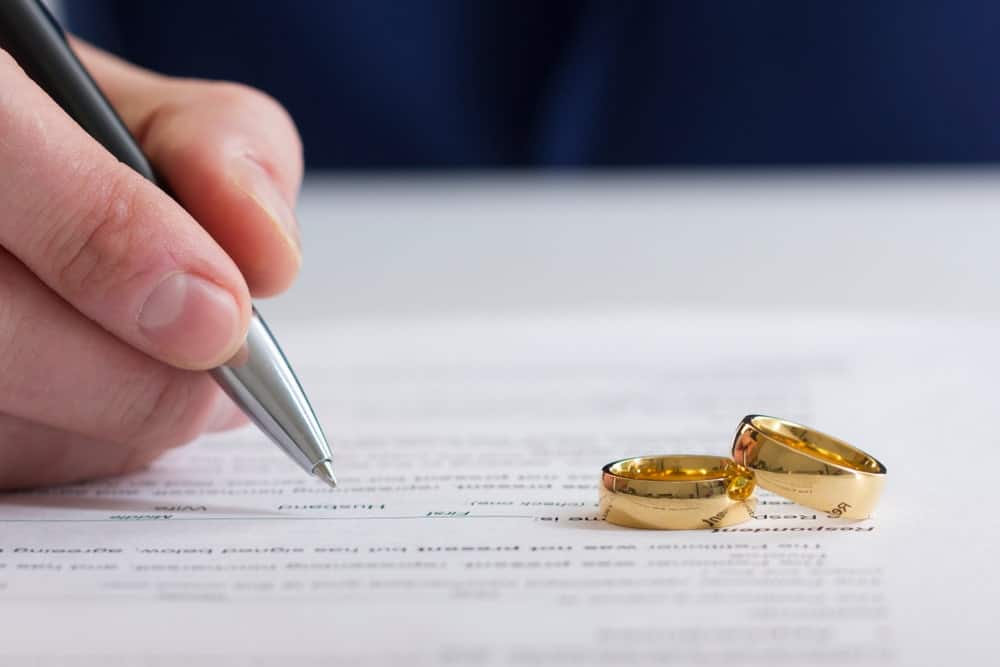How to File for Divorce in Texas?
The process of filing for divorce can be overwhelming, but having a clear understanding on how to file for divorce in Texas can offer some much-needed respite from the whole ordeal. You may have given your marriage a long, hard thought, or maybe you are simply seeking information regarding the process of filing for divorce, should the need arise in the future. Either way, doing your homework in advance can help you prepare for all potential scenarios. In this article, we will cover how to file for divorce in Texas.
Is it mandatory to file for divorce through a lawyer in Texas?
The first question most people raise when learning about how to file for divorce in Texas, is whether or not it is compulsory to have a lawyer. Considering how confusing the whole legal process can be to laymen, a divorce lawyer in Texas can help ensure that you get a good deal and your future is protected.
With kids, finances, properties and assets involved, reaching a fair settlement is easier with an experienced Texas family law attorney. But, if you and your spouse agree on the terms of the divorce, and can manage proceedings on your own, you need not hire an attorney. That said, there are few situations wherein it is crucial to consult with a divorce lawyer in Richmond, Texas.
When do I need a family law attorney to file for divorce?
While everyone who is looking for divorce is suggested to consult with a divorce lawyer, the Texas Office of Court Administration especially recommends it in the following situations:
- There is disagreement on issues like child support and custody, division of assets, alimony, etc.
- You have been subject to domestic violence or have received threats of the same
- A sizeable amount of debt is involved
- A lawyer is representing your spouse
- Valuable property is involved, such as a house, business, financial accounts, or other assets
- You will require spousal support (alimony) after the divorce
- Bankruptcy is involved
Even if one or more of the aforementioned situations are involved, you are not required to have an attorney if the case is uncontested. If the divorce is simple enough, filing for it yourself is not only less expensive, but also less stressful when compared to a contested divorce.
How to file for divorce in Texas without a family law attorney
The divorce law in Texas allows for uncontested divorce to be filed if the marriage is broken beyond repair, due to the incompatibility of the spouses. If you and your spouse wish to proceed with the divorce without a lawyer, here is a step-by-step guide on how to file for divorce in Texas.
Meet the residency requirements
To file for a divorce in Texas, the first step is to check if you satisfy the residency requirements. At the time of filing the divorce petition, either the petitioner or the respondent must have resided in Texas for a minimum period of six months at the time of filing. The petitioner is the spouse filing for the divorce, while the respondent is the spouse to whom the petition is served. The spouse must also be a resident of the county in which the Texas District Court is located for a minimum period of three months prior to the filing.
Sign and file the Civil Case Information Sheet
The Civil Case Information Sheet contains general information regarding the spouses involved in the proceeding. The petitioner must fill out the sheet with details such as their name, address, phone number, email ID, and other information as requested. The sheet must then be signed before it is filed in court.
Prepare and file the Original Petition for Divorce
Along with the Civil Case Information Sheet, the petitioner is also required to prepare, sign, and file the Original Petition for Divorce. It is only after the filing of this document that the divorce proceeding can commence in court. The petition must contain details about the marriage, along with a request to a judge to grant divorce on the grounds stated therein. Once you prepare and sign the petition, file it along with the Civil Case Information Sheet. Filing fees will have to be paid and once it is filed, a cause number will be assigned by the court. The petition will then be stamped, indicating that it is filed.
Waiver of Service and Consent
After filing the petition in court, a copy of the same but be shared with your spouse. The petition can be served to your spouse by the sheriff’s office of the county in which it is filed, or through a private process server. In case your spouse agrees with everything stated in the petition, and provides their consent to an uncontested divorce, you can deliver the petition to them yourself. Means of delivery may be in person or by mail. The Waiver of Citation form must also be delivered along with the waiver, and the document must be signed by your spouse before a notary in order to notarize their signature.
The respondent is required to file their answer to the petition by the Monday following the 20th day after which the petition was served. If the respondent doesn’t answer within the stipulated time period, a default judgment can be requested by the petitioner. This means that you can get granted the divorce without the respondent’s involvement. If the notarized waiver is returned to you within the prescribed time period, proceed to file it in court.
Serve a 60-day cooling-off period
A judge in Texas is not allowed to grant a divorce for a minimum of 60 days from the date on which the original petition was filed. This 60-day period is called the “cooling-off” period or “waiting period”. It provides some time to the spouses to see if there is room to repair their marriage, find a solution to their marital problems, and decide against a divorce. Even if the respondent returns the notarized waiver to the petitioner within 20 days, a minimum period of 60 days must be served before the divorce is final.
Obtain Agreed Decree of Divorce
All the terms and conditions of the divorce are present in the Final Decree of Divorce. The petitioner will have to draft and present this document to a judge, who will examine it. If it is deemed satisfactory, the judge will sign it to confirm that your divorce has been granted. The document must also be signed by the petitioner before a notary to notarize their signature.
With regards to an uncontested divorce, if the respondent has agreed to sign the Waiver of Citation and Consent to the divorce, he/she may also sign the Decree before a notary. Doing so will indicate that both spouses have agreed to the terms and conditions of the Decree. When the petitioner as well as the respondent sign the Decree, it is known as an Agreed Decree of Divorce.
Finalize the divorce by attending a hearing
After completing the 60-day waiting period and obtaining the Agreed Decree of Divorce, ask the court to schedule a hearing to finalize the divorce. The hearing must be attended only by the petitioner, but the respondent is free to attend it if they wish. The hearing is usually quite short, and the judge reviews the case documents that have been filed with the court.
During the hearing, the petitioner may have to read a short script testifying to all the facts stated in the petition, or will have to answer some questions posed by the judge. The Agreed Decree of Divorce will then be signed by the judge before pronouncing it in open court.
Complete and submit the Texas VS-165 Form
The Texas VS-165 Form will have to be filled in and brought to the court for your hearing. Also known as the Austin Form, this document contains details on suit affecting the family relationship. Once the divorce has been granted by a judge, after the signing of the Agreed Decree of Divorce, the Texas VS-165 Form must be handed to the court clerk. You will then receive the signed Agreed Decree of Divorce to bring you towards the end of proceedings.
Once the divorce process is complete, it is important to obtain certified copies of the Agreed Final Decree of Divorce. These copies can be obtained by both the petitioner as well as the respondent. A small fee will have to be paid for the same, but once you get this document, you will officially be through with the divorce process.

Fault-based vs. No-Fault Divorce
Before filing for a divorce, you will have to consider whether you wish to file for a fault-based or a no-fault divorce. With a fault-based divorce, you will have to prove that the reason for the divorce lies with your spouse. Conviction of felony, adultery, cruelty, etc. are some of the grounds for a fault-based divorce.
When it comes to a no-fault divorce, on the other hand, no spouse is to blame for the failure of the marriage. Instead, divorce is issued by the court on grounds of insupportability, which essentially means that the marriage is no longer tolerable, sufferable, or endurable. The outcome of the case will be significantly affected depending on which type of divorce you file for. For instance, a fault-based divorce could fetch you a greater share in the shared property, while the division is generally 50-50 in case of no-fault divorces.
It is therefore crucial to make sure you consult with your spouse before filing for an uncontested divorce, and only then proceed to file the petition. In case there is any disagreement regarding the terms and conditions of the divorce, consult with a Matrimonial Attorney in Texas as there is a risk of the divorce becoming contested.
Finding the right divorce lawyer in Texas
Now that you know how to file for divorce in Texas, you are aware of how tedious and time-consuming the whole process can be. Insufficient legal expertise can make the process harder still, causing emotional as well as physical stress in an already difficult moment. From settlement negotiations to mediation, and trial preparation to the drafting and submitting of legal documents, a Texas family law attorney can help you get a divorce with minimal fuss.
If you have decided to let a family law attorney fight your battle, make sure you meet with as many lawyers as possible to find the right one to represent you. Many people use referrals from family and friends to find a family law attorney. Lawyer directories can also be a good way to meet and consult with attorneys.
Cost of filing for divorce in Texas
At the time of filing for divorce in Texas, a filing fee ranging $250 to $300 will have to be paid to the court. Petitioners who are unable to pay the fee can submit and Affidavit of Inability of Pay. Your financial details will have to be disclosed to the court so it can decide whether or not you can be excused from the fees.
Apart from filing fees, various other divorce costs will also be incurred during the divorce process. Copy fees, service fees, etc. will have to be paid whenever necessary. Besides, professional fees will also have to be paid to those who helped in resolving the divorce, like your divorce lawyer, custody evaluator, mediator, etc.
Don’t File Alone. Contact Frank Vendt Child Custody & Divorce Attorneys Today!
The costs associated with your divorce can rise significantly if the case goes to trial. Tens of thousands of dollars may be incurred when preparing and going to trial. The costs incurred can be even greater in case the divorce ruling is appealed by one of the spouses. Basically, the greater the conflict involved in the divorce, the higher your costs will be. Consulting with a divorce lawyer can help you keep the costs in check. A divorce attorney can suggest various ways to lower costs, like preparing some of the documents yourself, or going for limited-scope representation.





